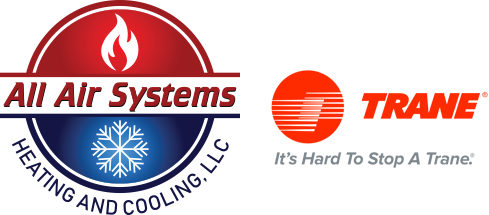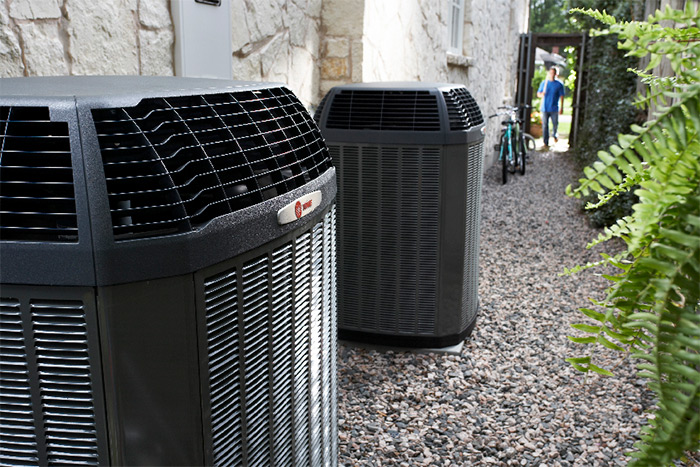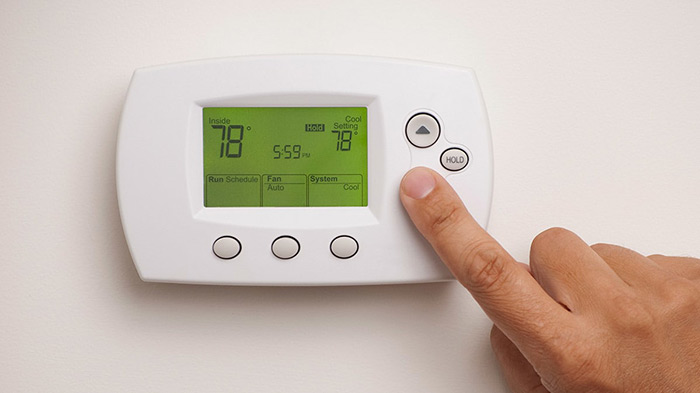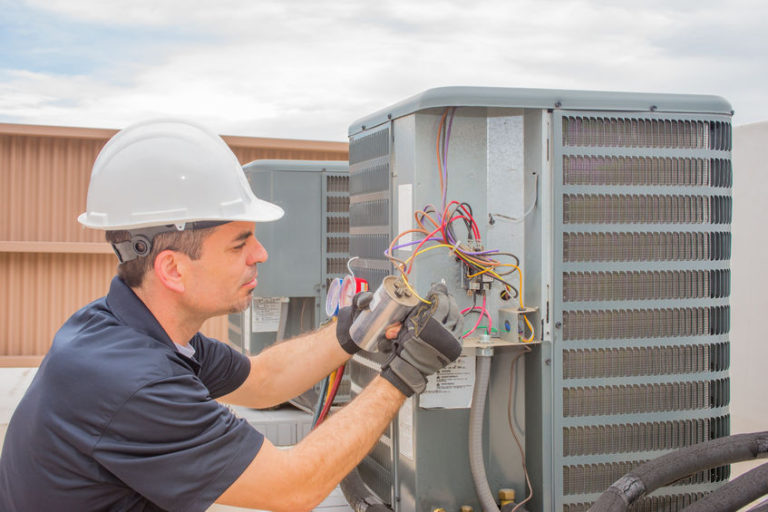What’s worse is knowing that your heating bill could have been lower if you had been aware of the hidden causes of lost heat. Do any of the items listed below apply to you? If so, you might be able to save cash from going out the window.
1. Fireplaces
Nobody can deny the unique comforts of a wood fireplace in winter; but they’re not actually that great in terms of heating efficiency. And while some people love the authenticity of a wood-burning fireplace, it is the least efficient method to heat your home. Because the smoke and ash have to be eliminated through the chimney, much of the heat is lost too.
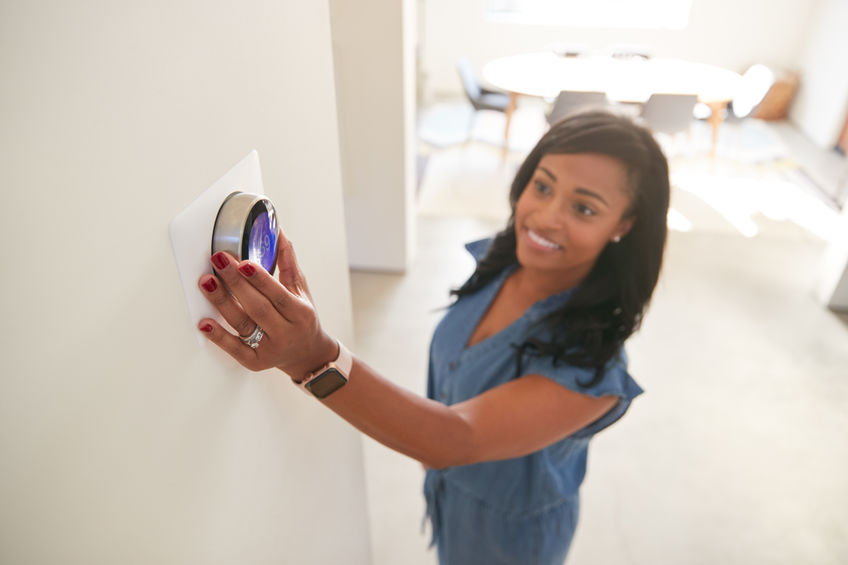
A traditional masonry chimney and wood-burning fireplace loses 80-90% of the heat up the chimney. Plus, additional air inside your New Jersey home is also pulled up and out through the chimney. To add to the problem, the chimney creates an opening that causes heat and A/C loss throughout the year. If you forget to close the flue, the problem is even worse.
To minimize heat loss, check your damper regularly to make sure it’s clean and functional. Another thing you can do is install a reflective surface on the back wall of the fireplace. This brings more heat forward into your home. Steel is a popular material for this. It may also be possible to use aluminum foil if the fireplace is big enough.
Install fireplace doors or a fireplace insert. This will retain more heat—especially if you’re careful to keep them closed when the fireplace is not being used. However, most doors don’t close tightly enough to prevent air leaks. If you install them on your fireplace, make sure they’re sealed all the way around so that no drafts can get through. Close both the doors and the damper.
The EPA recommends installing a fireplace insert to capture more heat and radiate it into a room, which prevents it from escaping through the chimney. Inserts must have a stainless steel liner that runs right to the top of the chimney to be safe. They use a heat exchanger to warm air, then circulate it. Most fireplaces convert only 15% of wood’s energy into useful heat, but inserts can increase the efficiency of a fireplace by a factor of five.
2. Electrical Outlets
In addition to openings around windows and doors, electrical outlets can be a common source for drafts. The average NJ house has three electrical outlets in every room. When these are loose and drafty, a substantial amount of heat is lost over time. One old-school search method is to slowly wave an incense stick around these problem areas on a windy day. If the smoke stream travels horizontally, you’ve got a leak that’s costing you comfort and money.
Fortunately, there’s a very cheap and easy solution. Sealing electrical outlets and switch plates is another easy task that can improve your home’s energy efficiency. Special insulating pads can be purchased for a few dollars at any hardware store, and installation takes only a few minutes with a standard screwdriver set. You do this by installing foam socket sealers that fit behind the outlet or the switch’s faceplate to act as a buffer between your home’s interior and the outdoor air. Don’t be nervous about handling electrical wiring. As long as you turn off the electricity while you’re doing it, there’s no risk. This will stop heat from traveling out through your outlets.
3. Doors
Obviously you want to seal your exterior doors well to prevent heat from escaping directly. You might think that if you regularly close doors to rooms you don’t normally use (or close vents) that the HVAC system in your home wouldn’t have to work so hard and your utility bills would go down. It makes sense that saving several hundred square feet of home to cool or heat could make a pretty big difference.
But closing doors actually decreases energy efficiency and increase your monthly bills. Your HVAC unit needs proper air flow to function at its best and closing doors obstructs airflow in your home. Heating and cooling system fans move a lot of air around the home. A typical home furnace moves between 1000-2000 cubic feet of air per minute. This is equivalent to moving 1000-2000 14-inch balloons every minute in your home. When you close a doorway you block the path for air to efficiently move through your house. The air in the room becomes pressurized due to the obstruction and that pressurized air which can create a continuous draft in the interior of your home.
When air isn’t coming in through your HVAC system — that’s a problem. Air flow is more prone to accumulating dust, humidity, dirt, and even carbon monoxide (CO). In a test done by Home Energy they closed all the doors in a home and found they had 1000 CFM of outside air being drawn into the home. The reverse flow of hundreds of cubic feet of air can bring carbon monoxide into the home. This is a whole different story on the safety effect caused by closing bedroom doors.
4. Windows
A zero tolerance approach to poorly sealed windows is a must for anyone hoping to retain more heat in the winter. Some people who live in New Jersey go so far as to cover their windows in bubble wrap. Your view will definitely be obscured, but if you’ve decided to pull out all the stops your quest for lower energy bills, you might want to consider it.
5. Thermostats
Poor thermostat management is one of the main causes of lost heat and higher costs. A programmable thermostat can make management easy. You can set up the thermostat to be lowered when you are not going to be at home.
These thermostats can then heat up the home right before you arrive. This can save you a lot of money on your heating costs over time. Avoid letting your house get too cold at night when you’re under the covers—it will take more energy to heat it up in the morning, and your gains will be lost. A programmable or smart thermostat will allow you to manage your heat with greater accuracy, allowing for slight decreases (around three degrees is a good number) when you’re not around.
If you lower your thermostat by one degree, you can save up to 3 percent on your heating bill in a 24 hour period. Put your thermostat just one degree lower on warmer days this winter, until you are comfortable with the temperature. You will be amazed at how much this simple step can really lower your heating costs each month.
The good news is that you can use this trick in addition to the other tips to improve your savings and reduce your heating bill even more during the winter months.
6. Poorly-maintained HVAC systems
Clean The Condensing Unit – Most residential HVAC systems have an exterior condensing unit/heat pump that releases hot air outdoors in the summer. This unit has metal fins that clog easily when exposed to pollen, dirt, and debris. You can reduce maintenance costs by using a water hose to lightly spray away any buildup. Refrain from using pressure washers, as they can damage your unit.
Replace dirty furnace filters to improve airflow through your heating system into your living areas. A clean filter reduces resistance so the furnace or air handler doesn’t have to use as much energy to circulate air. Check your filter monthly during the winter, and change it once it becomes covered in debris.
NJ HVAC maintenance should be ongoing and involve more than the occasional air filter change. Systems that are poorly maintained will always deliver substandard performance, no matter how modern or expensive they are. They can even break down just when you need them the most, resulting in a repair or replacement bill that could put your summer family vacation on hold until next year!
Have you had your furnace, ducts and vents checked lately? Scheduled maintenance from an HVAC professional is a small price to pay for greater efficiency throughout the winter. If you don’t already have a proactive maintenance program for your HVAC system, it’s a good idea to schedule semi-annual service with a qualified HVAC service company. They can make sure your system is operating at its most efficient settings and that parts or components are in good working order.
According to the Building Efficiency Initiative, routine system maintenance can save you anywhere from 5% to 40% on HVAC-related energy costs. Your local HVAC technician will be able to identify any coil issues, ductwork leaks, airflow difficulties, and signs of system instability and correct them before they can add extra zeros to a maintenance invoice.
If your system has to work harder due to dust, buildup, dirty filters, or clogged drains, it uses more energy and costs you more money. To keep your residential HVAC system at peak performance for a long time to come, schedule professional pre-season maintenance to help you get more out of your investment and save money in the long run. Routing maintenance ensures your system runs at optimum efficiency. You’ll also prevent future problems and costly repairs by staying ahead of the maintenance curve.
Eliminate Those Hidden Costs!
Using less energy to heat your home during the winter months is good for you and good for the environment. By understanding and avoiding the common pitfalls that result in lost heat, you’ll have all the comfort you need and a slimmer energy bill. Who knows—you might even save enough cash for a trip somewhere warm…
